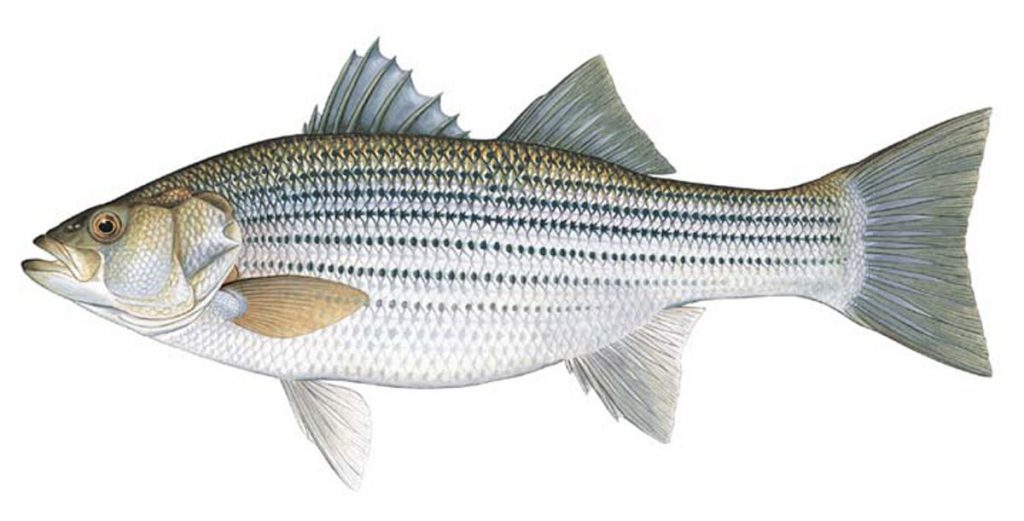Bass (Striped)

SPECIES INFORMATION
The striped bass has many names like striper, rockfish, linesider and Atlantic striped bass. It is an anadromous perciform of the moronidae family. One can find them along the Atlantic coast of North America. It has also been introduced into many fisheries across the United States. It is the state fish of Rhode Island, Maryland and South Carolina. They are the largest members of the bass family. The name striped bass comes from the stripes on its body. They have a streamlined shape. There are seven or eight stripes that run from the gills to the tails. The color of the fish varies from light green, olive, blue, and brown to black. Their undersides are white.
SIZE
The striped bass is quite a large fish. Usually, a mature fish can weigh between nine to eighteen kilos. There are records of a giant striped bass weighing almost sixty kilos caught in 1896. They can live up to 30 years. Young bass is smaller in size and weight when compared to a mature one. The average length is between 20 – 35 inches. Average weight is between 2 – 9 kilos. Female bass fish is most often larger than male bass fish. Striped bass travel in groups, or schools. Schools are usually made up of fish the same size, rather than the same age
RANGE
Striped bass is native to the Atlantic coastline of North America from the St. Lawrence River into the Gulf of Mexico to Louisiana. They migrate between fresh and salt water. The striped bass has been introduced to the Pacific Coast as well. This is for recreational purpose and to control the population of gizzard shad. Striped bass travel in groups, or schools. During the first 2 years of their life, they live mostly in small groups. They don’t form into schools until at least their third year. Schools are usually made up of fish the same size, rather than the same age.
HABITAT
Striped bass prefers rocky bottomed lakes and open water. They’re often found in deep, clear water bodies with moderate water temperature. In the spring season, the striped bass migrates up the Chesapeake into the rivers and streams. They do this to lay their eggs. After laying eggs they return to the bay. Once the young fish have hatched, they also move back to the bay. The striped bass remains in the bay for about four years. Then they move to the Atlantic Ocean. They return to the bay to lay their eggs.
DIET
Striped bass fish move in groups called schools. All the members of the school are of the same size and eat at the same time. The diet varies throughout their life. As larvae, bass eats waterfleas and tiny shelled copepods, a kind of zooplankton. The young need to eat as soon as they hatch. When they are young, striped bass eats fish and insect larva, along with tiny crustaceans. As adults, striped bass eats fish. In spring and fall, they dine on Bay anchovies and Atlantic menhaden. In winter, adults eat spot and croaker. Bass will also eat squid, mussels, eels, and worms.
